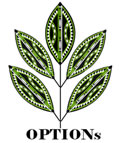
Fact sheet about Euphorbia tirucalli
Distribution and habitat
E. tirucalli, indigenous to tropical Africa, is the most widespread of all the Euphorbia species. It is found in Angola, Eritrea, Ethiopia, Kenya, Malawi, Mauritius, Rwanda, Senegal, Sudan, Tanzania, Uganda, Zambia, Mozambique, Zimbabwe, South Africa and Zanzibar and can survive in a wide range of habitats. It can grow in tropical arid areas with low rainfall, on poor eroded soils, saline soils and high altitudes up to 2000m but cannot survive frost. It grows wild, often in abandoned sites of homesteads. In Kenya for instance, it is found in Ruaka on the highway to Thika and in Jilore forest station in Kilifi, in Baringo, Sigor, Makueni and Kitui.
Flowering and fruiting habits
It is a deciduous shrub or small tree up to 12m tall with brittle, succulent branches up to 7mm thick, green with a whitish latex. Leaves are few, fleshy and linear-lanceolate, present at tip of branchlets. Cymes 2-6, congested at apices of branchlets, forking 2-4 times producing cluster of cyathia which develop into male and sometimes female flowers.
Uses other than pesticidal
Medicinal uses- In East Africa, E. tirucalli latex is used against sexual impotence, warts, epilepsy, toothache, haemorrhoids, snake bites, extraction of ecto-parasites and cough. In Malaysia, a poultice of roots and stems can be applied to nose ulceration, haemorrhoids and swellings. In India, it is a remedy for spleen enlargement, asthma, dropsy, leprosy, biliousness, leucorrhea, dyspepsia, jaundice, colic, tumours and bladder stones. Branch and root decoction used for colic. Ashes applied on open abscesses.
Use as an energy source- E. tirucalli latex is composed of petroleum-like hydrocarbons, largely C30 triterpenoids which on cracking yield high octane gasoline. It is a potential source of biodiesel due to its high biomass and growth in marginal areas unfit for other crops. Its ease of fermentation implies that it is a potential source of methane and biogas. It can be used as compost, charcoal and fuel wood, especially as it can grow in semi-arid areas devoid of forests and due to its fast growth rate which implies high productivity and quick acclimatization to an area and ease of drying.
Use for rubber- Its hydrocarbon polymers can be used for manufacturing rubber substitutes. Its latex is an emulsion of terpenes and resins in water, which can easily be transformed into rubber at low cost. It is used at the east African coast for the manufacture of local gum, for fastening knife blades to wood handles and spearheads to shafts. It can be used as wood-based glues and adhesives.
Use in conservation and Agroforestry- Its drought resistant nature makes E. tirucalli a good species to use in semi-arid areas for afforestation and reforestation for soil conservation- there has been success in Tanzania, Kenya and Sri Lanka. It is used as a hedge plant due to the irritant properties of its latex to potential invasive animals of homesteads and fields, as boundary demarcation and as a windbreak.
Ornamental- It is popular as ornamental plants in pots or in lawns rendering favourable trade.
Propagation and cultivation
Stem cuttings of E. tirucalli grow fast forming dense bushes which become naturalized and form a small tree. Seed germination is epigeous.
Seed collection & Storage
E. tirucalli is usually propagated with cuttings. However when collecting seeds from fruits, they should be cleaned with water, dried and stored in a cool place
There is no information on viability of the seeds with storage.
Parts used
Plant’s latex
Preparation
Extraction of latex, dry and grind to powder. Note highly irritant and gloves and masks must be worn when processing
Uses
Surface application
Target organisms
Against aphids, mosquitoes, some bacteria and molluscs
